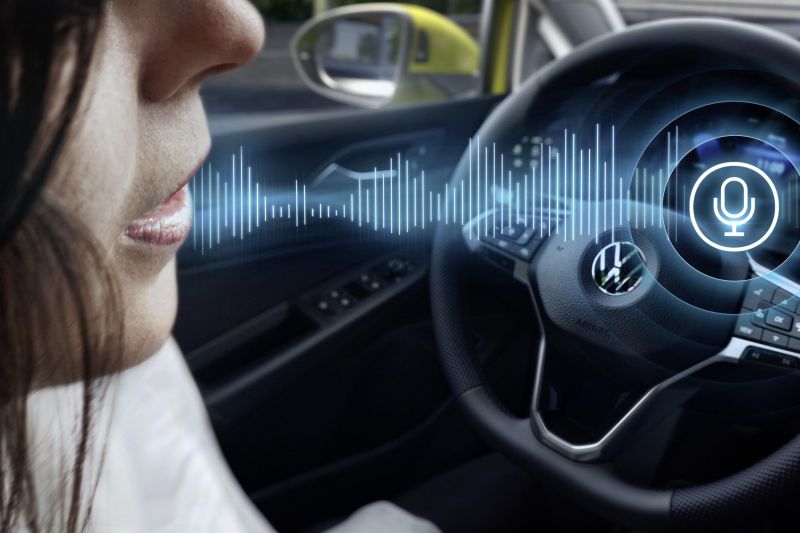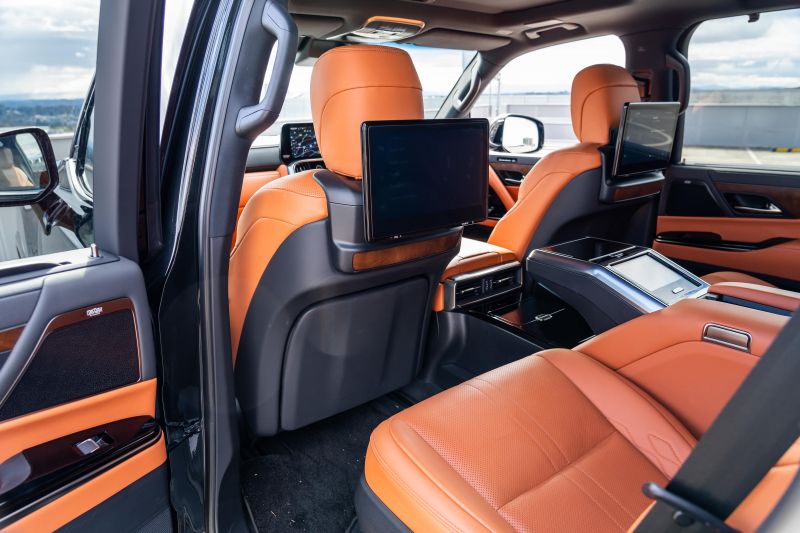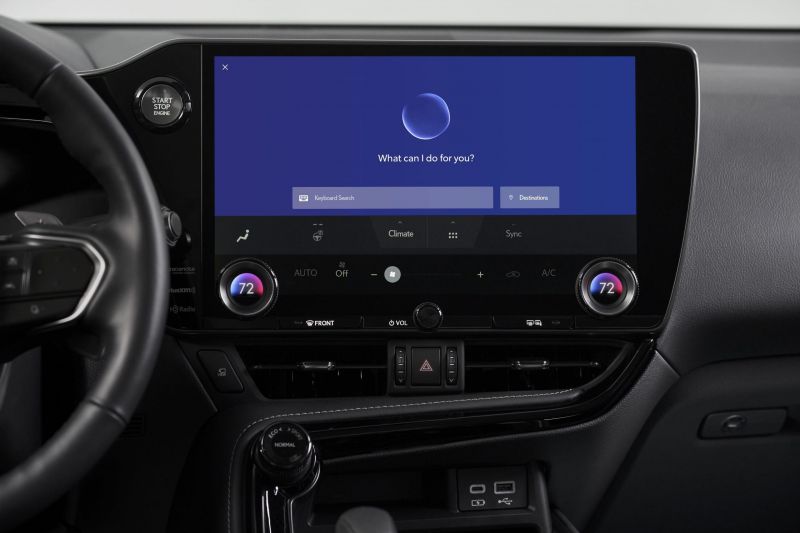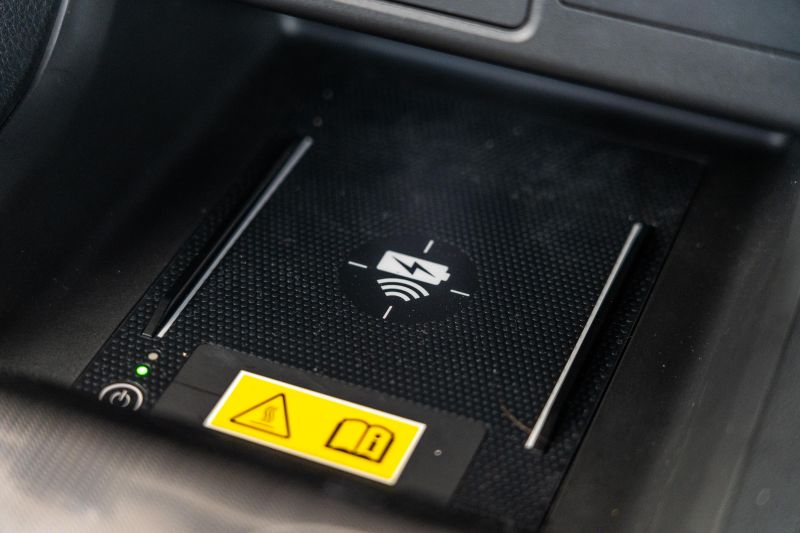New cars are faster, more efficient, and safer than before – but they also come with a range of features we think are a bit unnecessary.
After all, it’s getting tougher to stand out from the crowd.
Stringent safety regulations mean most new cars have similar silhouettes, and strict emissions standards mean small turbocharged engines – or electric motors – are the order of the day.
The death of buttons and dials mean essentially all new cars, from affordable SUVs to ultra-luxurious limousines, feature a variation on the same widescreen setup behind the wheel.
To compensate, brands have taken to fitting their cars with a range of unusual features designed to surprise and delight potential buyers on a test drive.
From ambient lighting that pulses in time with your music, to driver monitoring systems designed to stop you from looking away from the road on the move, here are the features we think you can steer clear of.
Scott Collie: Lane-centring assist
I absolutely despise most lane-centring systems.
Lane-keeping I understand. It leaves you to your own devices, before intervening when you stray towards the outer edges of the lane.
But lane-centring, which takes a more active approach to placing the car, never seems to work as advertised. In some cases (ahem, Hyundai) you’re constantly playing tug-of-war with the system, as it obnoxiously ignores how you want to place the car in favour of its own programming.
On the highway it’s annoying constantly feeling like the car is trying to overrule you. On secondary roads it verges on dangerous; sometimes the best thing you can do is cross the white lines to avoid a cyclist, opening door, or parked car, and lane-centring actively tries to stop you.
In other cases, the auto steering works so well you get comfortable and take a more relaxed grip on the steering wheel… only for the car to lose its mind beeping at you, telling you to put your hands on the wheel – even though they never left it.
Technology is supposed to make cars safer, and make our lives easier. Lane-centring falls into that frustrating grey area between human and autonomous control where it’s capable of achieving those goals, but rarely does.
Paul Maric: Remote parking
Remote parking is possibly the most useless feature I’ve seen in a new car to date.
It’s one of those gimmicks that works great in promotion material, but when you actually need to use it, it’s so unsure of itself that you never know whether you’ll lose half the vehicle while it’s trying to exit a parking spot.
We tried the remote parking feature on our Model Y when Tesla gifted owners the feature late last year. It almost collected the car parked next to it and showed no signs of slowing as it approached a metal bar at the end of our parking space.
If you don’t have an electric car, the vehicle needs to be switched on and if it uses a dual-clutch it does an awkward lurch each time it tries to move… yeah, just a no from me.
Tony Crawford: Automated parking assist
I’ve never actually used a “Park Assist” function outside of a launch (which has only happened once in 16 years).
The process even to engage the system is unintuitive, complicated, and one that generally takes three times longer than parking yourself.
Nice idea, but one that nobody uses.
James Wong: Audible speed alerts
Audible speed limit alerts and recommendations.
They drive me absolutely insane – just put the speed sign graphic in my cluster or head-up display.
Alborz Fallah: Useless drive modes
The most useless feature in most cars is drive modes that don’t do anything. You know how in a Formula 1 racing car the driver is changing the brake balance, differential percentage and god knows what else on an almost corner-per-corner basis?
Yeah, that’s not what is happening in hybrid Toyota or a host of other new cars that have drive modes that do almost absolutely nothing to improve the driving experience.
A new GT3 RS has some of the most adjustable and usable settings right on the steering wheel and it’s amazing to see it in effect, but what is the point of having drive modes in a family SUV if all it does is change the way the accelerator responds to your input?
Can they not put some more effort into drive modes? It would make a lot more sense to have individual buttons for things like suspension, exhaust, and other things when the vehicle actually has them fitted, but having Sport, Eco, and Normal mode which do basically nothing is such a stupid marketing gimmick.
What I would like is some innovation of features with driving modes – maybe a ‘don’t get a speeding ticket mode’ – which is basically a dynamic speed limiter you can turn on by pressing a button. You don’t have to keep setting the speed limiter as it uses its own GPS and camera data to read the signs.
Also a good idea? Porsche 911-style active driving modes, which use GPS data, sensors, and weather data to ramp up the traction systems for wet weather. It definitely needs a bit more thought, but what I can tell you is that the old Sport mode that does nothing is the most useless button in most modern cars.
Derek Fung: Voice assistants
I echo all the sentiments on automated parking assistants, so I’d like to offer up built-in voice recognition or natural language recognition.
No, I don’t want to speak to my car to tell it turn the temperature up, recirculate the air, mute the sound system, or skip to the next track. These things should be no more than a button press or dial twiddle away. And no, I don’t want to use your “HEY CAR BRAND” key phrase to activate this feature, either.
Like Siri and whatever the Google equivalent is called this week, this gets turned off straight away, because firstly I don’t want my car/phone listening in on all my inane chatter, and secondly I have kids.
As an aside, I do occasionally use voice recognition, but only via Android Auto or Apple CarPlay to change the destination on Google Maps.
Jade Credentino: Rear-seat entertainment systems
When I was growing up, passenger seat entertainment screens had just been introduced into some luxury cars and I was adamant that one day my parents were going to buy a car with them. Unfortunately they never did.
But now I think the feature is a little null and void since the introduction of iPads.
When I’m taking care of kids, it’s almost a compulsory item in the baby bag if the car trip is longer than 10 minutes.
Entertainment screens served a purpose in back in the late 2000s but now apps, games, and streaming services are available in an iPad. It doesn’t make sense to add a fixed screen in the back seats of a car anymore.
William Stopford: Voice assistants
I’m somebody who loves gadgets in cars, from massaging seats to ambient lighting. Even stuff like Hyundai’s Remote Smart Parking Assist I can get behind and perhaps even see a use case for. But I have my limits.
I don’t care for voice assistants because they’re often used as an excuse as to why physical switchgear has been removed in favour of touchscreen-based controls. In my opinion, two inferior systems doesn’t make for a worthy replacement for one good system.
Voice assistants also never seem to handle prompts as well as Android Auto or Apple CarPlay, unless it’s a super simple one like “adjust temperature to 20 degrees” or “open sunroof”.
I’ll echo the thoughts of my colleagues on some other features. Semi-automatic parking systems are gimmicky and never seem to work all that well, though when they do it’s impressive. And overspeed alerts are a pain, particularly when automakers force you to turn off the speed sign recognition to silence the damn alerts.
The overspeed alert systems in the latest Hyundai Motor Company products are the absolute worst. They sound a chime whenever they detect a new speed limit, and sound multiple chimes if you exceed it by more than 5km/h. And the system defaults to on.
It’s maddening, but Hyundai says it’s a regulatory requirement in some markets and not some perverse attempt at a convenience feature. Other companies will sound chimes, but they’re much more subtle – though mind you, nothing alarms your passengers more than random chimes and alerts sounding while you’re driving.
Jack Quick: Wireless phone charger
While I believe wireless phone chargers are necessary in cars without wired forms of Apple CarPlay and Android Auto, I’ve yet to find one that works properly every single time with my iPhone 12 Pro Max.
In some cars the wireless phone charger doesn’t have defined edges and sends my phone flying around corners, whereas in others my phone overheats due to the coils in the Qi charger not aligning correctly.
I’ve also had instances in cars where the wireless charger just outright refuses to charge my phone, even if I take my genuine Apple case off.
It doesn’t worry me too much when the wireless charger doesn’t work on shorter trips, but on longer trips when I’m navigating and pumping tunes on Apple CarPlay I really need the extra juice.
What I end up doing the majority of the time when I’m doing the latter is just plugging my phone in using a USB cable. This really defeats the purpose of wireless smartphone mirroring but if it means my phone will stay charged reliably then I’ll do it nine times out of 10.






